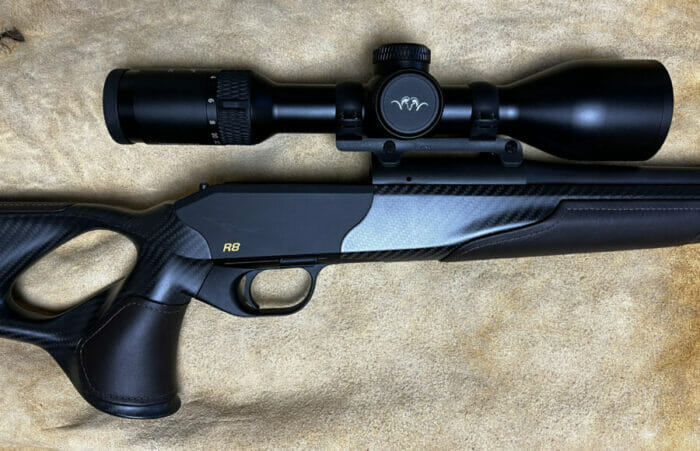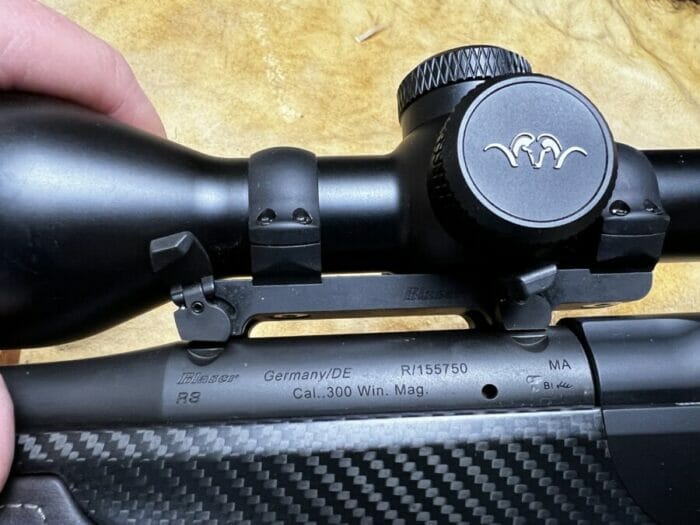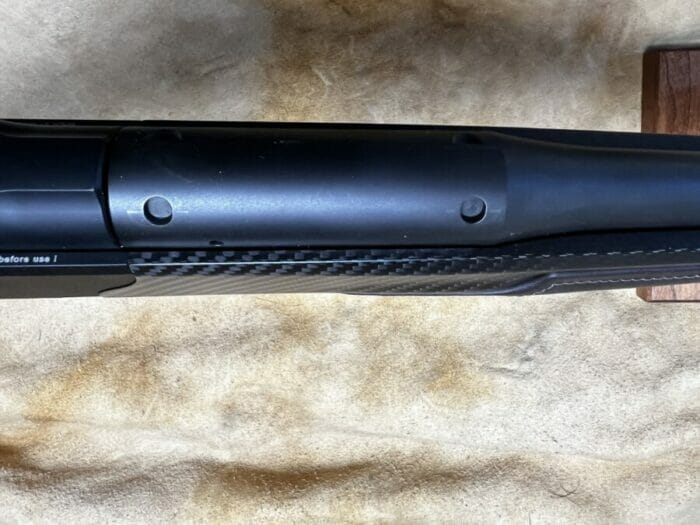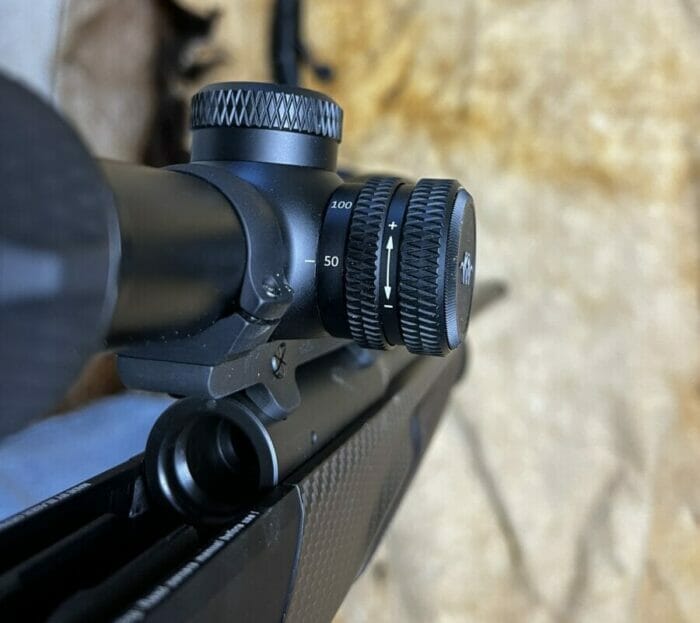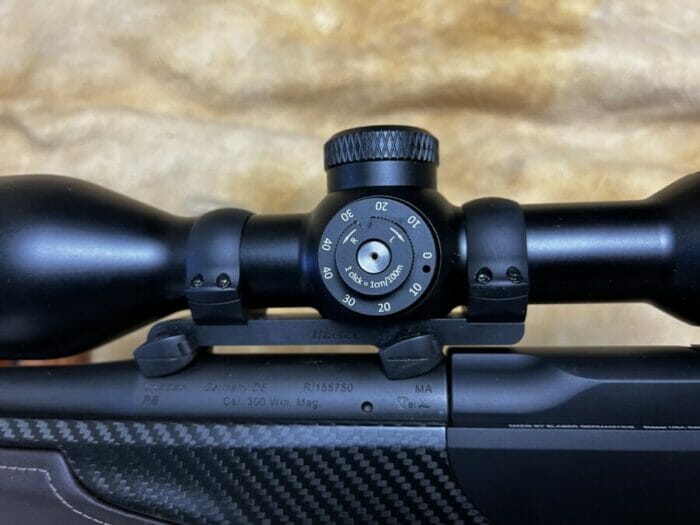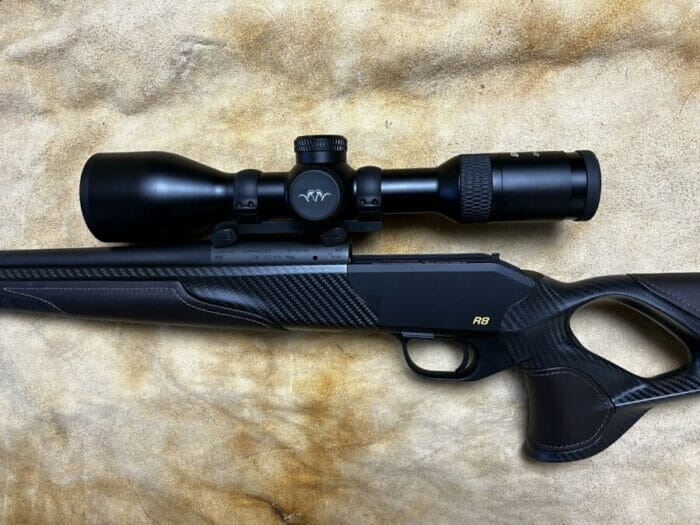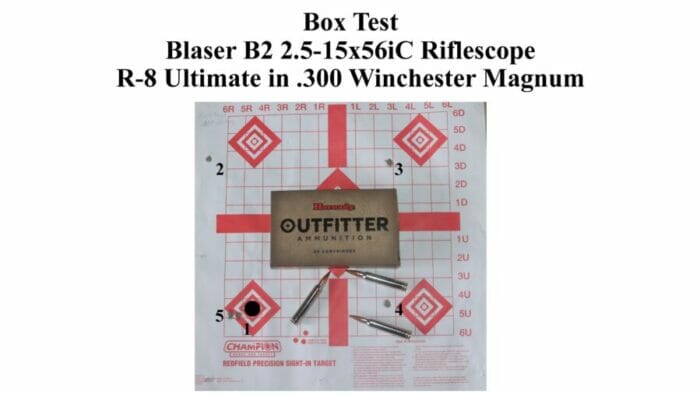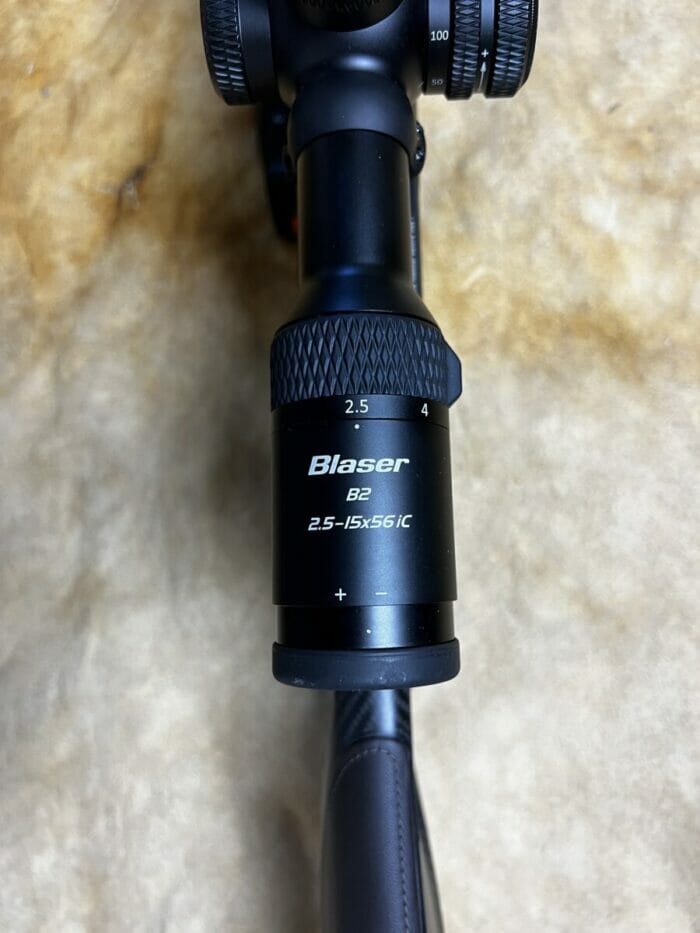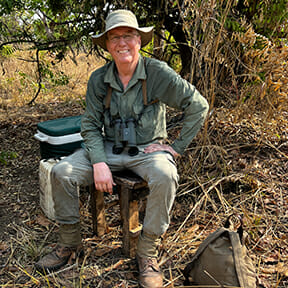Blaser B2 2.5-15×56 iC Riflescope Review
I went back and reminded myself how many times I’ve handled Blaser products. With the current review and one outstanding for the newest model R8 rifle, that number stands at eight. With that many, I’m getting a sense of expected quality and performance, but it’s possible for bias in reviews, whether positive or negative, because of previous experiences with a manufacturer. What helps me prevent bias from creeping in is the collection of data, in the case of riflescopes, that involves range work and hunting. I’ll discuss the range analyses later, but first, for the features of the Blaser B2 2.5-15×56 iC riflescope.
Blaser B2 2.5-15x56 iC Features
Starting with the ‘iC’ designation, this indicates ‘illumination control’ whereby the Blaser Rifle’s bolt and riflescope communicate with one another. Cocking the bolt turns on the reticle’s illuminated dot. I really like this feature, mostly because I rarely use illuminated reticles; thus, I lack the muscle memory for reaching up and switching them on.
The new Blaser R8 rifle on which the Blaser B2 sits is going with me to Africa. I’ll be hunting some species where longer shots are usual. Given my 65-year-old eyes, I like the availability of higher magnifications and the extra brightness afforded by the 56mm objective. Shannon Jackson suggested the Blaser B2 2.5-15×56 iC because it was a new model and fitted the type of hunting applications in Africa. It also provided several useful features.
The Blaser B2 is based on the Blaser-standard modularity. What that means for the riflescope is that 1) it’s easily detachable and re-attachable via its lockdowns and pins on the left and right side of the riflescope, respectively.
You might be asking why this is such a great feature. The answer is when the riflescope is reattached; it remains zeroed. I removed all the riflescopes from all the Blaser rifles I’ve reviewed after sighting them in, including this current model and the Blaser B2. When reattached, they provided the same point of impact. I don’t understand the technology and machining resulting in this reproducibility. Still, I’ve seen it too often to doubt it’ll be the rule rather than the exception in all combinations of Blaser rifles and scopes.
Before heading to the range, I needed familiarity with the various features for aiming and adjusting point-of-impact and clarity. The illuminated reticle and parallax adjustments (~55 yards to ∞) are located on the right-hand turret, with the battery for the illuminated reticle located under the cap of this turret as well.
Elevation and windage – with one click equal to 1 cm (~.4 inches) at 100 meters, about 109 yards – dials reside under the top and left-hand turret caps, respectively. At 109 yards the maximum adjustment to elevation is ~49 inches and to windage is ~24 inches.
The Blaser B2 weighs a bit over 28 ounces. Its length, short of 13 inches, allows a maximum eye relief of 3.5 inches. The R8 in .300 Winchester Magnum came with a muzzle brake and recoil suppression system, so this amount of eye relief was plenty. Other rifles (Blaser and other brands) I’ve reviewed and owned with this amount of eye relief, but without recoil suppression via brakes or Blaser-type padding, never ‘bit’ me. I feel comfortable that 3.5+ inches of eye relief sufficiently protects the shooter from nasty encounters with the rear edges of a riflescope.
Range Analyses
My range analyses evolved over the years, mainly through mentoring by friends who review many more firearms than I do. However, one aspect I add that many reviewers don’t is the collection of detailed data. This isn’t because I’m smarter somehow; it’s because I am a research scientist, and data collection is lesson number 1 in our training. The type of range analyses I run, and the manner of data collected, are, however, because people like editor, Dan Zimmerman, taught me the details of a ‘Box Test’ for riflescopes, and the owner of 4StableSticks, Lilian Camalet, introduced me to their wonderful fieldrests. I’ll provide additional details of the range workup in a separate review of the Blaser R8 rifle. Still, for the Blaser B2, both the accuracy and Box Test data give an indication of how the riflescope x rifle combination performed.
I mentioned in an earlier set of reviews – of a Meopta riflescope and Mauser rifle – of a morning at the range blanketed with thick fog. The fog limited visibility, but because of meetings, I had limited time to collect data. This was a tough test for both riflescopes and shooter’s eyes, with the further targets (300 and 400 yards) nearly invisible through the white haze. That adds a good deal of weight to the accuracy estimates. The first observation is that all groups, at all distances – off the bench or 4StableSticks Ultimate Carbon, Standing model fieldrest) – were less than 1 x MOA, with five of the seven groups less than 0.5 MOA. As a reminder, the diameter of 1 x MOA groups is approximately 1, 2, 3, and 4 inches at 100, 200, 300, and 400 yards, respectively. The clarity and brightness of the B2 provided the needed resolution for very accurate shooting, even out at the distances significantly affected by the thick fog. At the time, I was less than happy with the environment, but in retrospect, the fog was a fortunate intruder.
The next step in the riflescope review was the so-called Box Test. This involves firing five cartridges with the same aim point (in the following illustration, the aim point is indicated), but with adjustments made to either the elevation or windage, altering the path of the bullets such that they strike approximately in the corners of the target area. The following photograph illustrates the reproducibility (within shooter error!) of the changes in elevation and windage. The first and final shots (‘1’ and ‘5’) are the most telling for a riflescope. If the riflescope has excellent reproducibility in its mechanisms, the first and last shots should touch or at least fall very close to one another. That is the case for the .300 Winchester Magnum R8 and the Blaser B2 riflescope. The first and last impact points essentially touched one another.
Conclusion
The Blaser B2 riflescope is simply outstanding. It lived up to the high expectations generated by its brand and price tag. The clarity afforded shooting in conditions that were challenging, to say the least – dense fog and early morning sunlight reflecting off said fog. The rifle x riflescope combination provided the platform for excellent accuracy (sub-1xMOA with the majority of groups sub-0.5MOA). This is a pricey setup, but one that provides the promised quality. “You get what you pay for” comes to mind.
Rating:
This riflescope is an excellent product. Yes, it comes with a price tag that moves it out of the budget of some, but what it promises in clarity, light-gathering, and extra features (like communication with the rifle for activating illumination) it delivers. The sharpness at all magnifications, yielding outstanding accuracy and reproducibility under the trying conditions of the range analyses, proved its quality. Though touted as very durable (which I believe from using other Blaser riflescopes on tough hunts), it weighs under 1.5 pounds. This provides the user, especially in rough hunting country, a lighter load; this is ideal for those of us in less than 20-something shape. The Blaser B2 sent my way is heading to South Africa for a hunt in the Eastern Cape. So far, I can’t identify a reason for lowering the score from five stars. I’ll let you guys know if that changes on the Safari.
Key Features: Blaser B2 2.5-15×56 iC Riflescope
Magnification – 2.5 x 15x
Objective diameter – 2 inches
Tube diameter – 1.18 inches
Field of view – 52.5-8.5 feet at 109 yards (100 meters)
Eye relief – 3.5 inches
Focal plane – 2nd
Impact change per click – 0.39 inches at 109 yards (100 meters)
Elevation / Windage range – 49 inches and 24 inches at 109 yards (100 meters)
Length (OAL) – 12.87 inches
Weight – 28 ounces
Reticle – 4a
Illumination – Red Dot
MSRP – $1900
Mike Arnold has been a life-long hunter. The Hunter’s Horn blew very early for him. From the age of five, Mike has spent months each year pursuing game animals – from quail and rabbits behind his parents’ house, to kudu and leopard in Africa, and Brocket deer in Mexico. Mike’s articles include feature pieces in Sports Afield, Hunter’s Horn, Safari Magazine, and African Hunting Gazette. Mike also produced two TEDx presentations on the topic of conservation-through-trophy-hunting. You can find links to many of his articles and his Blog here.
Mike is also a Professor and the Head of the Department of Genetics at the University of Georgia. He works in conservation biology and is the author of the 2022 book, BRINGING BACK THE LIONS: International Hunters, Local Tribespeople, and the Miraculous Rescue of a Doomed Ecosystem in Mozambique. Mike’s book is available for purchase at bringingbackthelions.com, Amazon and local bookstores.

